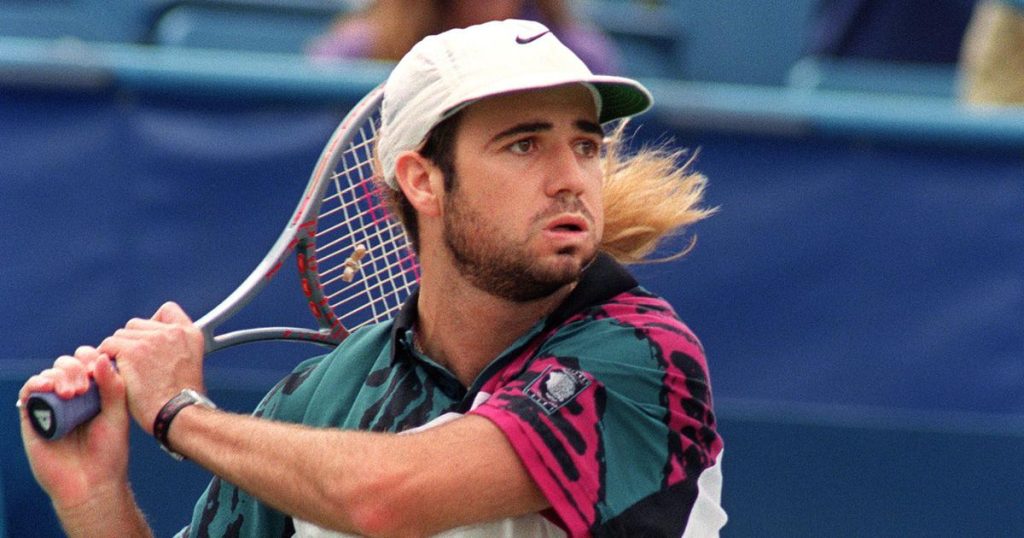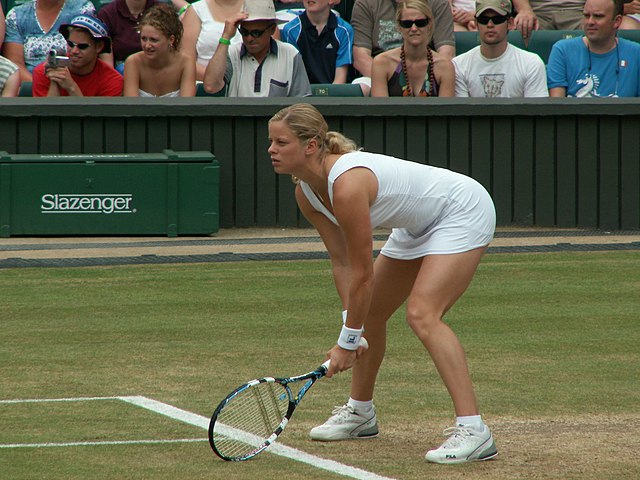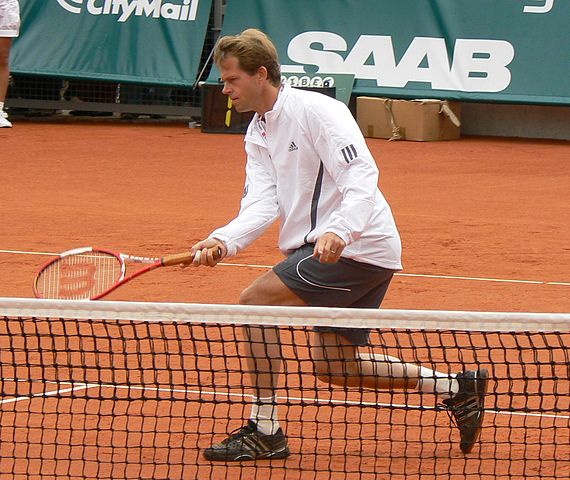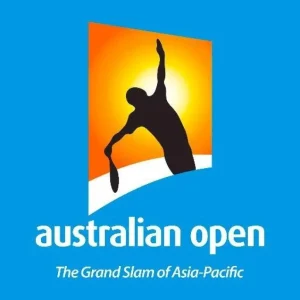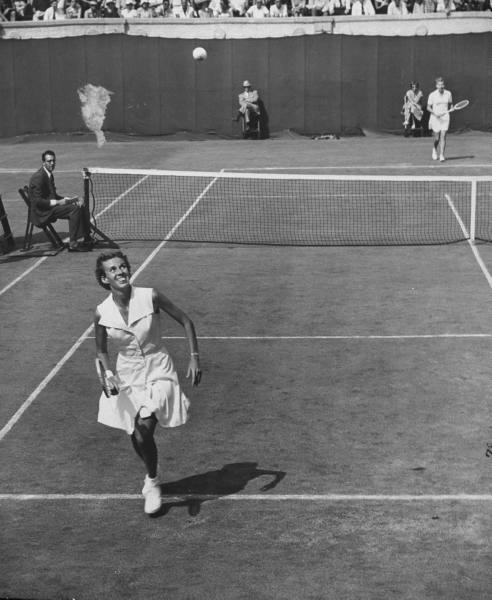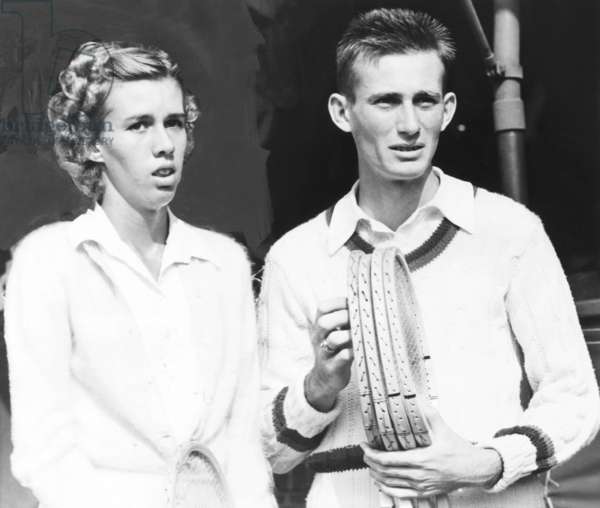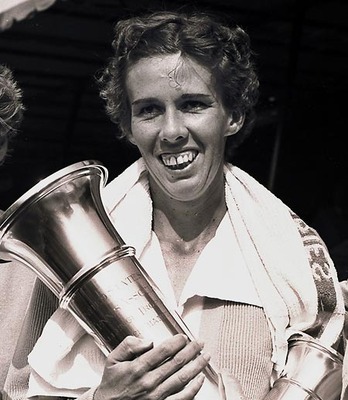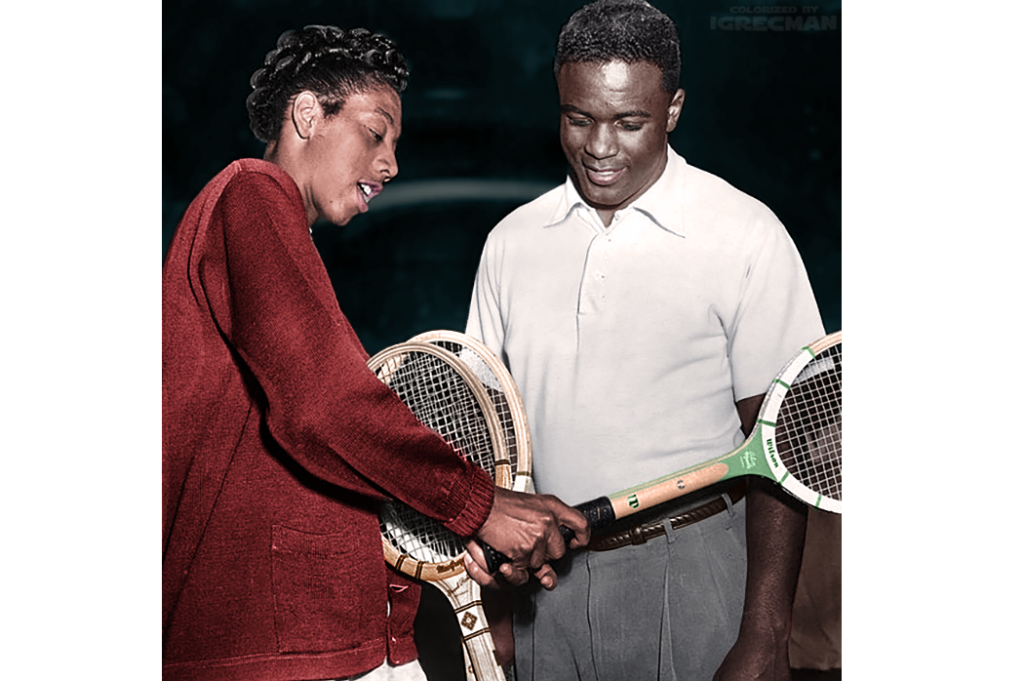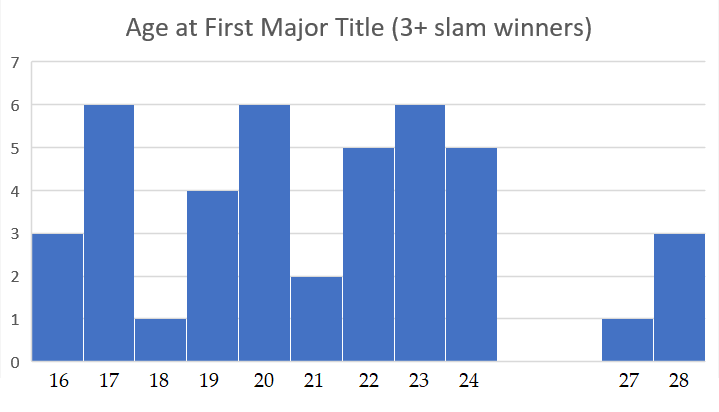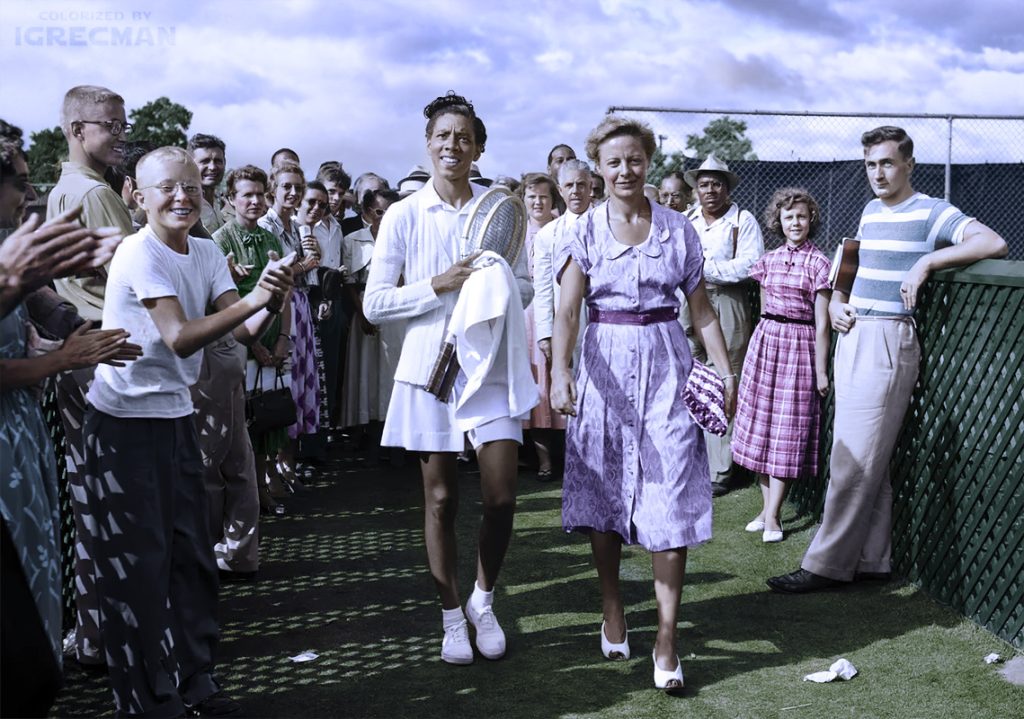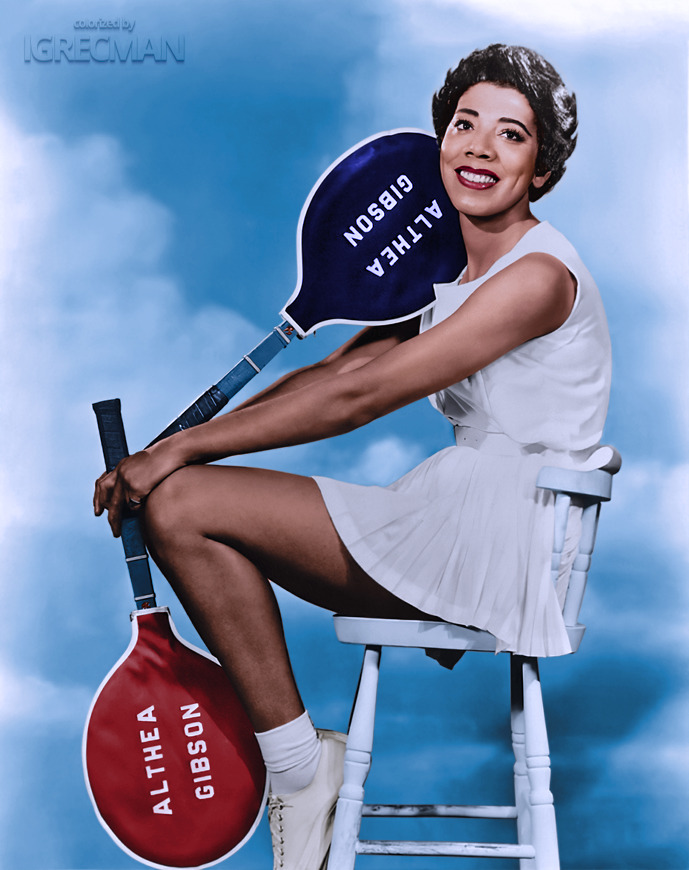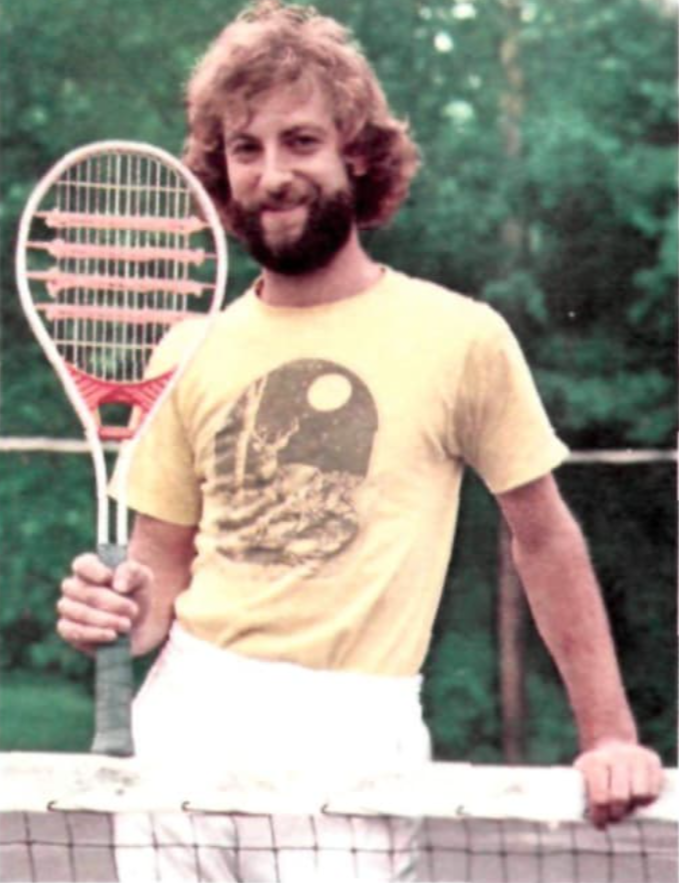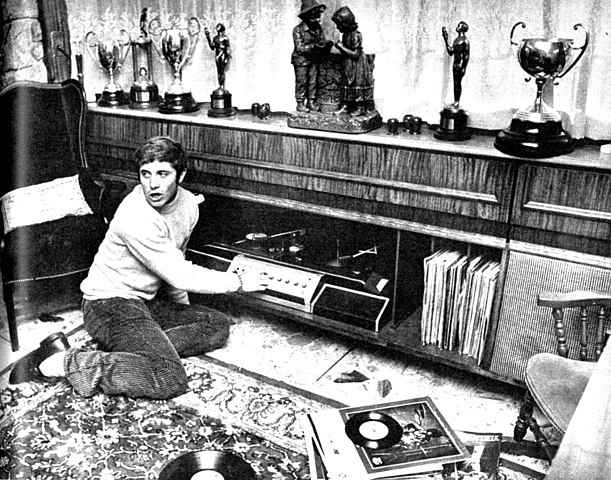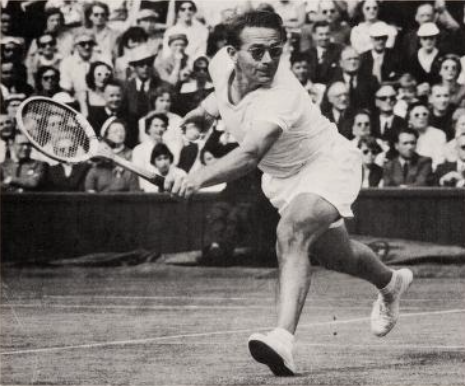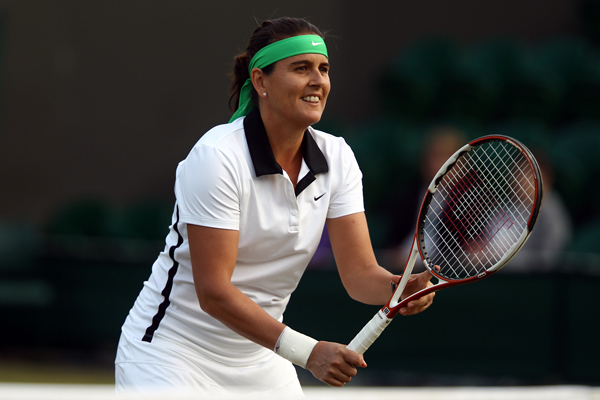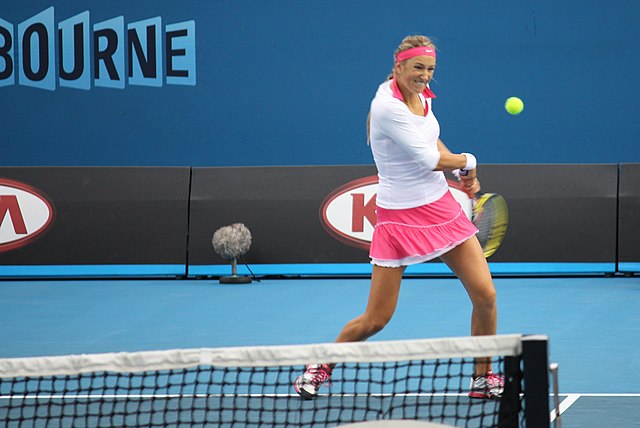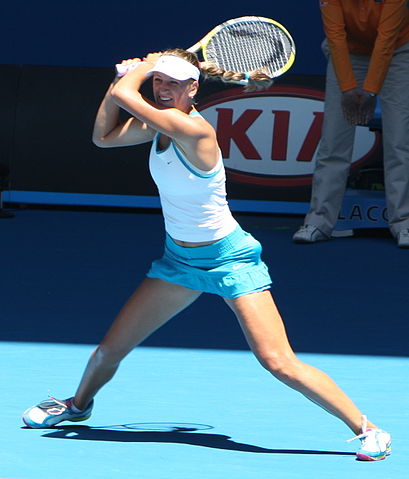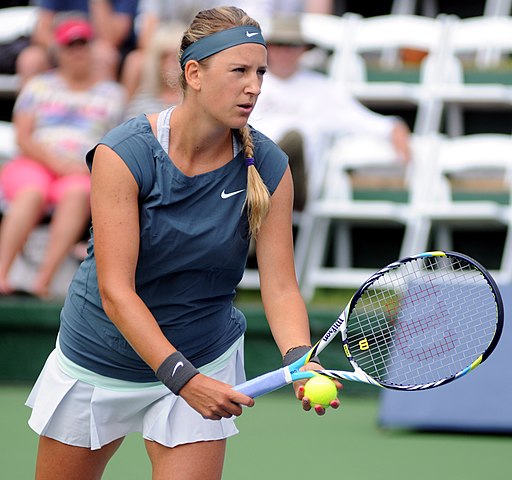In 2022, I’m counting down the 128 best players of the last century. With luck, we’ll get to #1 in December. Enjoy!
* * *
Andre Agassi [USA]Born: 29 April 1970
Career: 1987-2006
Plays: Right-handed (two-handed backhand)
Peak rank: 1 (1995)
Peak Elo rating: 2,282 (1st place, 1995)
Major singles titles: 8
Total singles titles: 60
* * *
Two images of Andre Agassi will persist for as long as people care about tennis.
One is the denim-shorted, spiky-haired enfant terrible of the late 1980s, the ball-basher who flogged Canon cameras and proclaimed that Image is Everything.
The other is the open face and bald head of the thirty-something who became the most beloved player in America by the time of his retirement in 2006. That’s the portrait on the cover of his memoir and the look that no one who watched the US Open in 2005 or 2006 will soon forget.
The two personas barely share a resemblance. It’s impossible to review Agassi’s career without marveling at his constant reinvention. In two decades, he went from teen idol to teen burnout, savior of American tennis to wasted talent, tennis-hater to comeback kid, jokester to elder statesman.
His game was less schizophrenic, but it changed plenty as well. He arrived on tour with a forehand that could split a two-by-four, one that had to be that good to hide his backhand. In time, his pinpoint backhand became the signature weapon. The mindless slugging of his early days gave way to tactical prowess of the Brad Gilbert school. He traded a fast-food diet and a casual approach to training for the teachings of strength coach Gil Reyes. He was the fittest man on the circuit after most of his peers had retired.
How did the outrageously talented kid from Las Vegas go from hair model to role model? While one match–the 1999 French Open final–is often referred to as the key turning point, the American’s saga was more roller coaster than right-turn-at-Paris. As much as his eight major titles, the winding road is what makes the Andre Agassi story so distinctive.
* * *
Tennis has always had a complicated relationship with its bad boys. Players have always been expected to behave in a manner as constrained as their all-white attire. But as the pro game went global and minted a growing number of millionaires, it became obvious that rebelliousness sold as many tickets as it did newspapers. Some pundits were ready to appoint foul-mouthed prankster Ilie Năstase as the sport’s savior almost as soon as the Open era began. Every time Năstase, Jimmy Connors, or John McEnroe dented the boundaries of proper decorum, the game’s television ratings crept still higher.
By the mid-1980s, Jimbo and J-Mac were fading. Arthur Ashe predicted in 1985 that “the bottom is going to fall out at the top of American men’s professional tennis” in two of three years.
Point is, fans and journalists alike were prepared to be understanding when Agassi and his hair–“like Cyndi Lauper’s after a fettuccine fight,” in Curry Kirkpatrick’s memorable phrase–arrived on tour. Apart from the shock at first glance, the kid didn’t seem that bad. Some watchers thought he was a throwback, a relaxed, playful competitor who would applaud his opponent’s best shots.
I’m sorry.
Agassi’s talent was undeniable. At Stratton Mountain in 1987, the 17-year-old upset top-tenner Pat Cash and took a set from then-number one Ivan Lendl. He won the event a year later, one of six titles he bagged in his first full season on the circuit. Jimmy Arias, himself known for a howitzer of a forehand, said, “Andre hits the ball harder than anyone else by far.”
His ability to take the ball on the rise was even more astonishing. One fellow player called his hand-eye coordination “disgusting.”
One of the earliest objections to the flashy youngster was also the most time-worn. He was a bruising baseliner who gave only the flimsiest lip service to an all-court game. Ion Țiriac, then coaching Boris Becker, said of the American, “If a player hits as hard as he can all the time, matches will turn into shooting contests and the beauty of the game will disappear. His is a limited game that has nothing to do with finesse.”
“Agassi could revolutionize the game,” said Țiriac. “But I hope he doesn’t.”
* * *
With the victories came more than the usual teenage dose of overconfidence. In a 1988 Davis Cup match against Martin Jaite in Buenos Aires, Agassi fell 0-40 down in a Jaite service game. As a stunt, he caught Jaite’s next serve out of the air. He thought it was harmless fun; Jaite, his teammates, and–especially–the Argentinian crowd disagreed.
Andre apologized, and in the days before ubiquitous PR training, he might have even meant it. But the infractions started to pile up. At the WCT Finals in Dallas the following March, he retired from a match against McEnroe despite showing no signs of injury. His handlers kept him out of Wimbledon, saying it was just another tournament. When he clapped for his opponents’ winners, the men across the net increasingly saw it as mockery.
Worse, his results suffered. It was harder to forgive the antics when his peers began to surpass him. In 1989, he lost a third-round battle of Nick Bollettieri products to Jim Courier at the French. Michael Chang–a year younger than Agassi–won the tournament. In a Davis Cup tie against West Germany, he dropped both of his singles rubbers. While one was a thrilling five-setter with Becker, the other was a faceplant against Carl-Uwe Steeb.
Strangely enough, the reinvention of Andre Agassi had already begun. The teenager turned to religion, carrying a Bible with him on the road and watching his once-unchristian mouth. Jim Loehr, a sports psychologist working for the USTA, considered Agassi’s sudden shift in behavior to be unprecedented.
The born-again slugger didn’t win over the locker room, though. When he quit halfway through a Davis Cup dead rubber against Australia, Darren Cahill said, “Andre is a great player, but what comes out of his mouth is of little significance. I wouldn’t want him on [our] team.”
Ivan Lendl also remained skeptical. “I’m sad anyone can cherish Agassi,” said the man who beat the young American in their first six meetings. “The kids see him as a rebel with his earring, hair and no-shave look.”
* * *
Agassi turned 22 without a major title to his name. Chang, Courier, and Sampras got there first, sometimes at Andre’s expense. He reached three slam finals between the 1990 and 1991 French Opens, but his style-before-substance reputation made it easy to believe he was a flake who might turn out to be incapable of crossing the final hurdle.
Still, those who looked for a transformation could always find one. Sports Illustrated profiled him in May 1992, and Sally Jenkins found that his “demeanor, once that of a loud and terrible child, has softened into a gauzy uncertainty.” She continued: “He has matured into a rather gentlemanly, thoughtful guy, a polite door opener and a check grabber who has awakened to at least some of the excesses in his life.”
Agassi recognized that his incentives were all wrong. “Most people have to work really hard and win some big matches, and then they get money and popularity. For me it has been the reverse of everybody else.” He was the highest-paid endorser in tennis, picking up $300,000 appearance fees, back when that was real money. He earned $20 million from his racket sponsor alone.
His ranking fell out of the top ten at the start of 1992, and he did little to save it. A semi-final showing at Roland Garros was encouraging, but Courier stopped him again.
Agassi was no longer the savior of American tennis, and some pundits were ready to write him off entirely. Edwin Pope of the Miami Herald wrote, “If Agassi ever wins Wimbledon, I’ll eat my T-shirt. Not only has he no chance to win, but if he doesn’t pull himself together soon, he could be out of tennis in two or three years.”
What’s a good wine to pair with T-shirt? Agassi had only played Wimbledon twice before, losing a quarter-final to David Wheaton the year before. In 1992, he lucked into a manageable draw. He drew Becker in the quarters, a tough opponent but one he respected and brought the best out of him. Agassi won in five. He ended the surprise run of 33-year-old John McEnroe in the semis, then took the title with a five-set final over Goran Ivanišević.
McEnroe raved about his passing shots and Ivanišević spoke a few kind words at the net. The newly-minted Wimbledon champ and his hair were still staples of television commercials, but his conversion into a more substantial player–and human being–seemed complete.
* * *
Or not. Agassi finally got the better of Lendl in Toronto, but he only recorded one more top ten win for the rest of the 1992 season. Courier beat him again at the US Open.
1993 was a return to the same old story. Bronchitis kept him out of the Australian Open and wrist tendinitis forced him to skip the French. He fell out of the top ten again before Wimbledon, and despite a quarter-final showing–“If anyone can go on no practice, it’s me”–he didn’t come close to defending his title.
Things were so dire that his coach, Bollettieri, fired him.
Upon reaching rock bottom, what is a man to do, except reinvent himself? Agassi returned to the tour in 1994 with a healthy diet, a sleek new physique, and a fresh attitude. Courier asked, “Which attitude is this? Is this the new attitude, or is this the new attitude?”
Whatever it was, it was new. Sort of. Ranked outside the top 30, the freshly-fit Agassi reached the final in Miami, upsetting Stefan Edberg before losing to Sampras. He flailed through a mediocre season before putting things together at the US Open. In New York, he won a five-setter against Chang, bulldozed Thomas Muster, and defeated Michael Stich in the final.
Agassi and McEnroe at the 1994 US Open
Brad Gilbert, Agassi’s new coach and the mastermind of his new tactical soundness, was so confident that he predicted Andre would win the Australian Open, too.
He did, claiming his single victory over Sampras in a major final. After knocking off Pete again in the 1995 Miami final a few months later, he took over the number one spot in the rankings. The top spot was his almost until the end of the year, as he put together 26 consecutive wins on North American hard courts. The streak ended only when Sampras beat him in the US Open final.
* * *
At the time, the title match in New York seemed like a mere hiccup in a career-best season for a man now considered an “earnest champion.” He had lost to Pete before. Andre had more natural talent, but he brought out the best in his steadier rival.
Instead of a blip, the US Open loss started a downward spiral. Agassi took his formerly inconsistent ways to a new level in 1996. He defended his title in Miami, then lost in the second round at the French and the first at Wimbledon. He won the gold medal at the Atlanta Olympics, backed it up with a title in Cincinnati, then got himself defaulted by swearing at the umpire in Indianapolis. He finished the year with four losses and barely hung on to a place in the top ten.
1997 was even worse. His ranking fell outside the top 100. On the North American hard courts he had always dominated, he dropped decisions to the likes of Scott Draper, Justin Gimelstob, and Javier Sánchez. He began using crystal meth and failed a drug test.
Agassi in 1997, bereft of both hair and form
All the transformations and reinventions that got Agassi through his first decade on tour apparently didn’t stick. He still earned $14 million a year in endorsements, proving that Image–even a tarnished one–really was Everything.
Agassi turned 28 in 1998. He would later speculate that all the ups and downs, the years where tennis wasn’t his top priority, left him with more in the tank than the typical player his age. When he finally decided to rededicate himself to the game, he fully bought into the program of his longtime strength coach Gil Reyes. He might have half-assed the first ten years of his career, but this time, the former McDonald’s junkie would come back fit, fast, and focused like never before.
* * *
None of it would’ve mattered if he didn’t win. And he nearly didn’t. At the French Open in 1999, he found himself in the final despite dropping at least one set in four of six matches en route. He came within two points of a second-round loss to Arnaud Clement. Small wonder, since a shoulder injury knocked him out of Düsseldorf the week before and nearly kept him out of Roland Garros as well.
Playing for the championship, he could only watch while 100th-ranked Andrei Medvedev red-lined for two sets to take a 6-1, 6-2 lead. Agassi finally got a read on the Ukrainian’s serve, and he tightened up his errant backhand. After losing every single one of Medvedev’s first serve points in the second set, he won more than 40% of his return points the rest of the way.
“For me not to win today would have been devastating,” he said after the match. He might not have collapsed the way he did after the 1995 US Open, but it’s easy to imagine a scenario in which Medvedev holds on and Agassi’s celebrated second career never gets going.
Instead, the American was a hero. The French title gave him a career Grand Slam. He was only the fifth man ever to achieve the feat and just the second–after Jimmy Connors–to win a major on three surfaces.
Agassi’s second decade in the game would be even better than his first. The 1999 French was his fourth major title. He would win four more by 2003. At the 2000 Australian Open, he scored a particularly satisfying triumph over Sampras in the semi-finals. A scintillating fourth-set tiebreak shifted the momentum against his long-time rival, and the championship match against Yevgeny Kafelnikov was straightforward in comparison.
The new (new, new new) Agassi would be instantly recognizable to a fan of today’s veteran superstars. In addition to his ever-present natural gifts, he won with a combination of fitness and savvy. He rarely set a foot wrong (or put that foot in his mouth) anymore, serving as an ambassador for the game. He had the persona and performance of the late-model Big Four before there was a Big Four.
Agassi and Federer in 2001
When he finally gave way to age and a new generation, he did so with the grace he had come to be known for. The 2005 US Open final pitted the 35-year-old Agassi against the new king, Roger Federer. Andre gave the youngster a scare and thrilled the New York crowd, but ultimately there would be no suprises. Federer won in four.
After the match, Agassi’s three-year-old son, Jaden, asked who he played.
Dad replied, “Some guy with long hair.”
